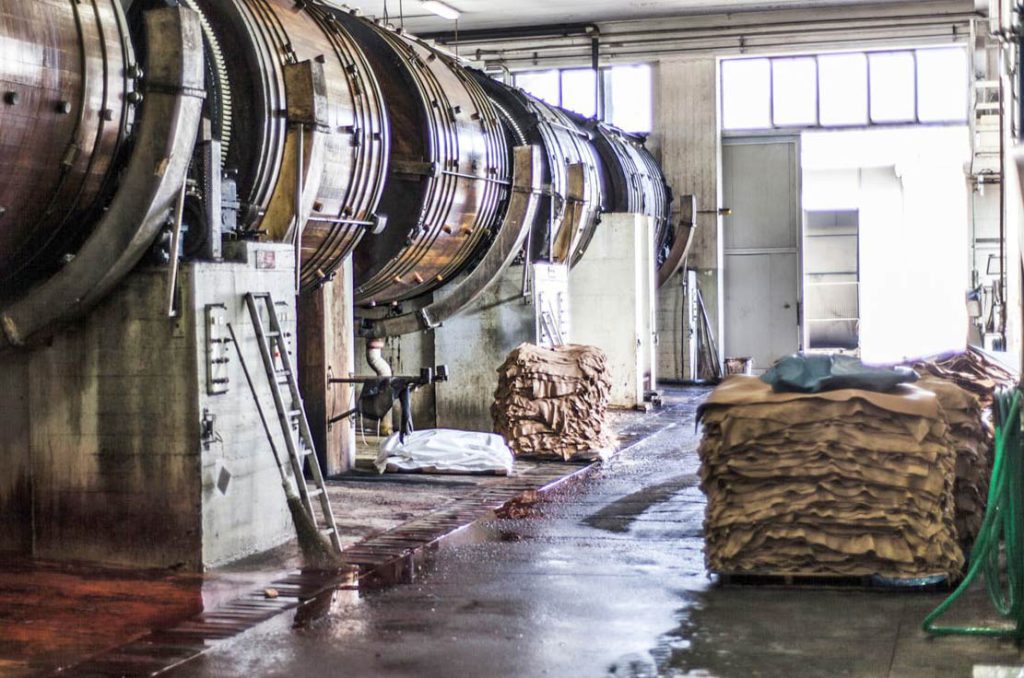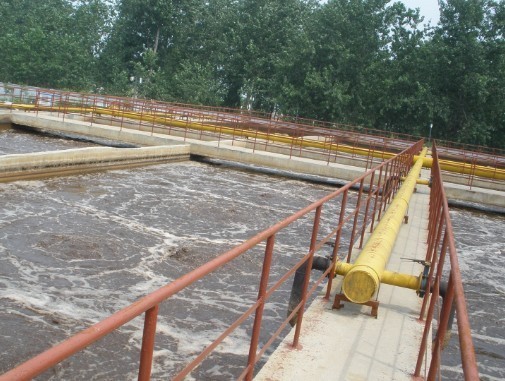Purifying leather and tannery wastewater
Purifying leather and tannery wastewater is one of the most challenging issues in industrial wastewater treatment due to its high pollution. Tanning is the process of turning different animal skins into leather. This process prevents the activity of bacteria, fungi and other destructive life factors on the animal’s skin. Depending on the production process, more than 440 kg of chemical products is consumed per ton of fresh skin, which causes them to dissolve in the water used in the production cycle. Thus leather industries have huge effluent, with a very high organic pollutant load content and high soluble mineral salts, including ammonium, chlorides, chromium produce sulfides and sulfates. In the following, the tanning process in leather and pickling production units will be briefly mentioned, and then the wastewater treatment steps of leather and pickling will be briefly examined.
The tanning process in leather production units includes the following three stages:
Pre-tanning process:
- Soaking the salted skins in water for one night to separate blood, faces, salt and proteins soluble in water and soluble in salt water.
- depilation (complete removal of all hair) by immersing the skin in lime and sodium sulfide – and subsequent de-liming
- Lashing and mechanical separation of waste tissues from the inner surface of the skin. After that, the skin is cut into two layers. The upper layer (top) is two-thirds the thickness of the skin and is better than the lower layer.
- liming with the help of a weak acid (lactic acid) and an enzyme with a chemical substance with an enzyme base, to remove the rest of the hair and break down the proteins.
- Pickling or Acidification using salt solutions and uric acid to create the necessary acidity in the skin in order to prevent the precipitation of cream salts on the skin fibers.
The wastewater from the pre-tanning area contains a large number of suspended solids and dissolved organic substances, salt, fat and chemicals that have not been used in the process (especially sulfides); Also, these wastewaters are very alkaline and need a lot of oxygen.
Tanning process:
Cream tanning is done using ceramic sulfate. The tanning process stabilizes the protein network (collagen) of the skin. At this stage, acid wastes are produced that contain trivalent cream salts.
The wastewater from the pre-tanning area contains a large amount of suspended solids and dissolved organic substances, salt, fat and chemicals that have not been used in the process (especially sulfides); Also, these wastewaters are very alkaline and need a lot of oxygen.
Tanning process:
Cream tanning is done using ceramic sulfate. The tanning process stabilizes the protein network (collagen) of the skin. At this stage, acid wastes are produced that contain trivalent cream salts.
Completion operations:
These operations include the following parts:
- Pressing to remove moisture
- Secondary levelling by shaving
- Coloring and softening of tanned skin with the help of emulsion oils
- Performing secondary tanning with the help of artificial tannins (syntans) and tanning extracts
- drying and final cutting
- covering the surface and final payment (buffing)
Qualitative characteristics of tannery and pickling wastewater:
Normally, the wastewater of leather factories has a high COD and a high concentration of nitrogen because animal skin contains protein, keratin, fat, etc. In addition, other chemical products such as fats and dyes are used in the tanning process, which is highly They are pollutants.
Tannery and pickling wastewater contains inorganic pollutants such as chromium, chloride, ammonium, sulfide, sulfate, etc., among which chromium has a higher concentration and is problematic, and it also has a higher concentration of salt. In the tanning process, salt is used to preserve the skin, including sulfide, chromium salt, etc., which causes the alkalinity to rise and the pH to approach 10. In the table below, the qualitative characteristics of leather and tannery wastewater have been examined:
خصوصیات فاضلاب چرم سازی
| خصوصیت | میزان حدودی موجود در پساب( ) |
| COD | 7000-14000 |
| BOD5 | 4000-5500 |
| NH3 | <250 |
| SS | 2500-3500 |
| Cr3+ | 100-300 |
| S2- | 200-250 |
| SO42- | 1800-2500 |
| Cl– | 4500-6000 |
Steps of leather making and Pickling:
Garbage separation in leather processing and pickling
Considering the production of two major parts and important types in the pre-tanning (soaking) and tanning (tanning) sections, it should be in the image that does not perform this separation and separates them first and before entering the house with garbage collector’s mechanical They are littered
Possible methods for sulphide purification in the Liming line
Among the mentioned methods, the following can be mentioned:
1) Acidification to bring the pH to 2 to 3 and aeration and absorption of the resulting hydrogen sulphide gas in the caustic solution in scrubbers, then, discharge the effluent for consumption or reuse.
2) Precipitation with the help of iron or ferric salts
3) Oxidation by chlorine or hydrogen peroxide
4) Oxidation with the help of aeration near the manganese catalyst
5) Using the advanced PECR purification reactor without the need to inject coagulants
In this method, the ducts in the soaking part are directed towards a mechanical garbage collector (one millimeter). The aforementioned garbage collector can be placed in a surface channel and its upper edge can be designed so that the collected garbage is poured into a container located near the garbage collector.
After passing through the garbage collector, it is guided by gravity into a pumping station with a submersible pump so that it can be transferred to one of the two oxidation tanks. While one of the tanks is responsible for purification, the second tank is for receiving the next leachate. A deep aeration system, equipped with COARSE air diffusers, will be installed in each of the tanks to create mixing and aeration.
Main management system
The acceptance of sulphide leachates is accompanied by other decisions and has the following steps:
1) Balancing discharge/pollution load based on mixing/aeration with coarse bubbles
2) pH correction (if necessary), chemical flocculation with the help of alum and polyelectrolyte, or using an advanced PECR reactor instead.
3) Primary settling
4) Image by continuous aeration method using aeration blowers with deep aeration method and with proper design to provide a strong and healthy biological system that can withstand fluctuations.
5) Condensation or storage and solution of the mixture of primary sludge and excess secondary sludge in order to transfer them to dryer beds and transfer the dried sludge pieces to the landfill center.
6) Provision should be made for injecting the required amount of iron salt into the sludge storage or thickening tank. The purpose of this work is to precipitate the amount of sulfide that occurs as a result of anaerobic activities inside the tank, and the deposition of these sulfides is a measure to control unpleasant odours.










